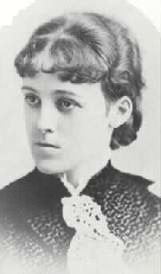“Is there any test of genius but success?”
Published in 190 5, The House of Mirth offers a blistering social commentary on the lifestyles and behavior of super-rich American society. Having grown up in this society, author Edith Wharton evaluates it here as an insider, and her trenchant observations give this early novel a liveliness and verisimilitude not characteristic of “aristocratic” novels written by outsiders. Set at a time in which the old, moneyed aristocracy was being forced to admit newcomers who had made their recent fortunes through industry, the novel shows moneyed society in flux, the old guard ensuring their exclusivity against parvenus who are not the “right type,” at the same time that their sons and daughters were often securing large fortunes through marriage into some of these new families.
5, The House of Mirth offers a blistering social commentary on the lifestyles and behavior of super-rich American society. Having grown up in this society, author Edith Wharton evaluates it here as an insider, and her trenchant observations give this early novel a liveliness and verisimilitude not characteristic of “aristocratic” novels written by outsiders. Set at a time in which the old, moneyed aristocracy was being forced to admit newcomers who had made their recent fortunes through industry, the novel shows moneyed society in flux, the old guard ensuring their exclusivity against parvenus who are not the “right type,” at the same time that their sons and daughters were often securing large fortunes through marriage into some of these new families.
Lily Bart, a beautiful young woman of good family whose father lost everything when she was only nineteen, is left dependent on wealthy relatives in this society until she can charm a financially secure suitor into marriage. At age twenty-nine, she is no longer a debutante, and the pressure is mounting for her to marry, though she lacks the unlimited financial resources of social rivals. Still, her wit and charm make her a delightful companion, and she is never at a loss for suitors. Intelligent enough to want a real marriage and not just a merger between families, she has resisted making a commitment to date, though the clock is ticking.
 As Lily tries to negotiate a good marriage and future for herself, she is aware that the competition is fierce. Women “friends” pounce on the latest gossip and spread rumors to discredit rivals, and Lily’s reputation is tainted with hints of impropriety. Her opportunities for a good marriage begin to dwindle. Complications always arise for Lily, and they continue here in this melodrama.
As Lily tries to negotiate a good marriage and future for herself, she is aware that the competition is fierce. Women “friends” pounce on the latest gossip and spread rumors to discredit rivals, and Lily’s reputation is tainted with hints of impropriety. Her opportunities for a good marriage begin to dwindle. Complications always arise for Lily, and they continue here in this melodrama.
Author Edith Wharton creates a complete picture of turn-of-the-century New York society and its “important” people – their lack of morality, their opportunism, their manipulations, and their smug self-importance, characteristics one may also see in Lily when she is part of this society. But Wharton also shows how quickly a woman may become an outcast when the money runs out and she is thrown on her own resources without any training for any other kind of life. A well-developed melodrama filled with revealing details, this novel established Wharton’s reputation as a novelist/commentator on the manners and morals of high society and those who would participate in it.
Notes: The author’s photo is from http://www.wsu.edu/~campbelld/wharton/bio.htm
Also reviewed here: SUMMER, GLIMPSES OF THE MOON, AGE OF INNOCENCE
[schema type=”book” url=”http://marywhipplereviews.com/edith-wharton-the-house-of-mirth-2008/” name=”HOUSE OF MIRTH” description=”REVIEW. Classic Novel, Literary, US Regional” author=”EDITH WHARTON” publisher=”Wharton Press (November 13, 2013)” pubdate=”2013-11-13″ edition=”Reprint edition” isbn=” 978-1619493889″ paperback=”yes” ]
